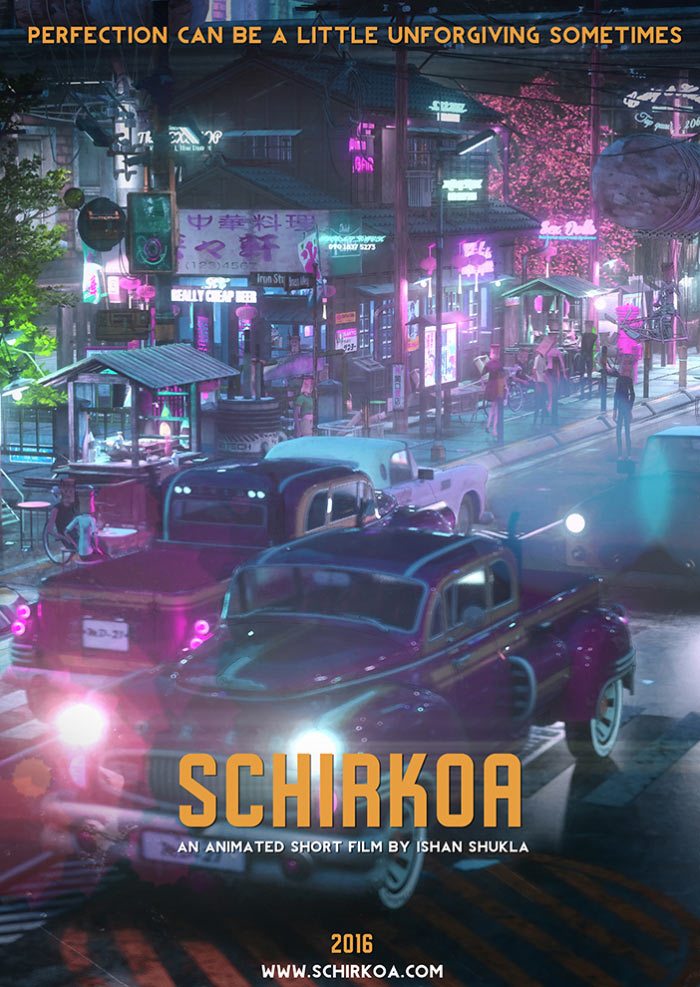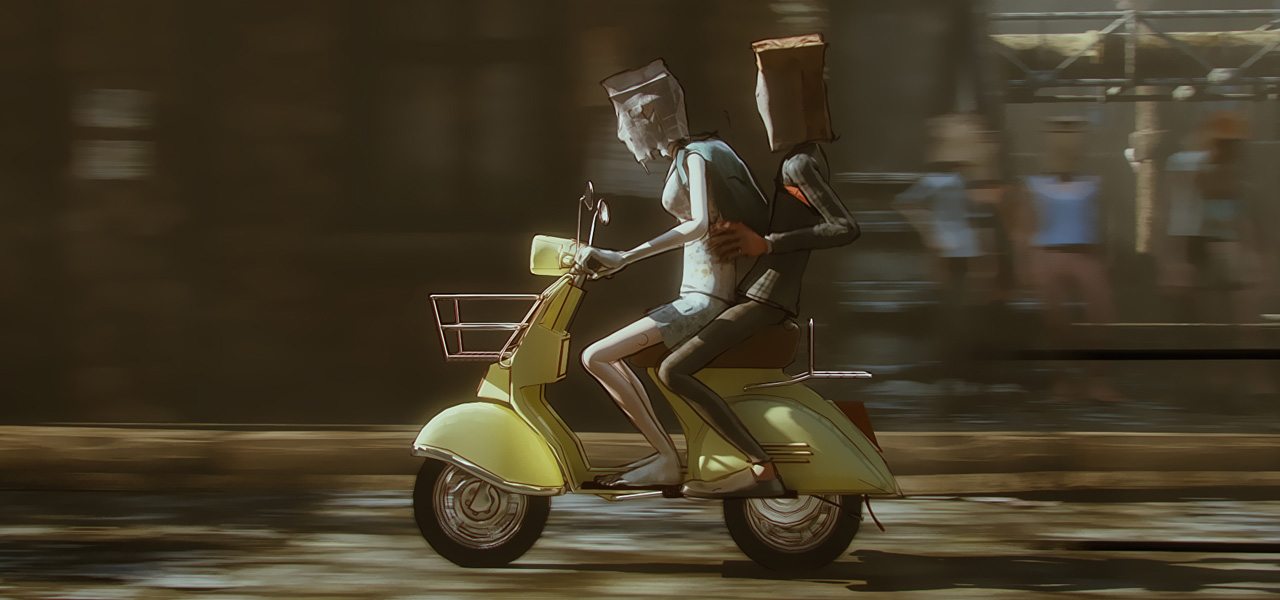
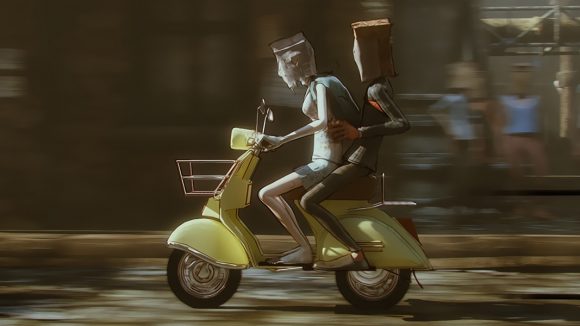
Indian Filmmaker Ishan Shukla Shares His Path to Making the Short ‘Schirkoa’
Indian filmmaker Ishan Shukla toiled away for four years on his first animated short film, Schirkoa. When he finished it last summer, he began submitting the film to festivals. And, it won a few, including at the L.A. Shorts Fest, which meant the film qualified for the animated short category of the Academy Awards. It’s an incredible achievement for any filmmaker, let alone one from India where independent animation has not yet hit its stride.
Schirkoa also recently won best in show at SIGGRAPH Asia 2016 in Macau. Cartoon Brew sat down last month with the director at the conference to find out more about the short, how it was made, and about Shukla’s thoughts on the struggling Indian animation industry.
But first, watch the trailer for Schirkoa below:
Cartoon Brew: Where did your idea for this film come from?
Ishan Shukla: It basically came from a graphic novel I was working on. This was about a society in which people had cracked the way to live in a seamless world without any discrimination or racial differences because of a Bag Act. Under the Bag Act, people had to wear bags on their heads.
Partly I used that idea to avoid having to do facial animation! But then I thought about it, and I thought it could actually look better if I just had bags as faces – it would be more stylized and create a surreal experience.
And from there it turned into this dystopian world. I was very inspired by the novel 1984 and Terry Gilliam’s Brazil. I also play a lot of games, including Dishonored which doesn’t really have a designated time period, so I also liked the idea that if you had this stylized look for a film or game, it can be timeless.
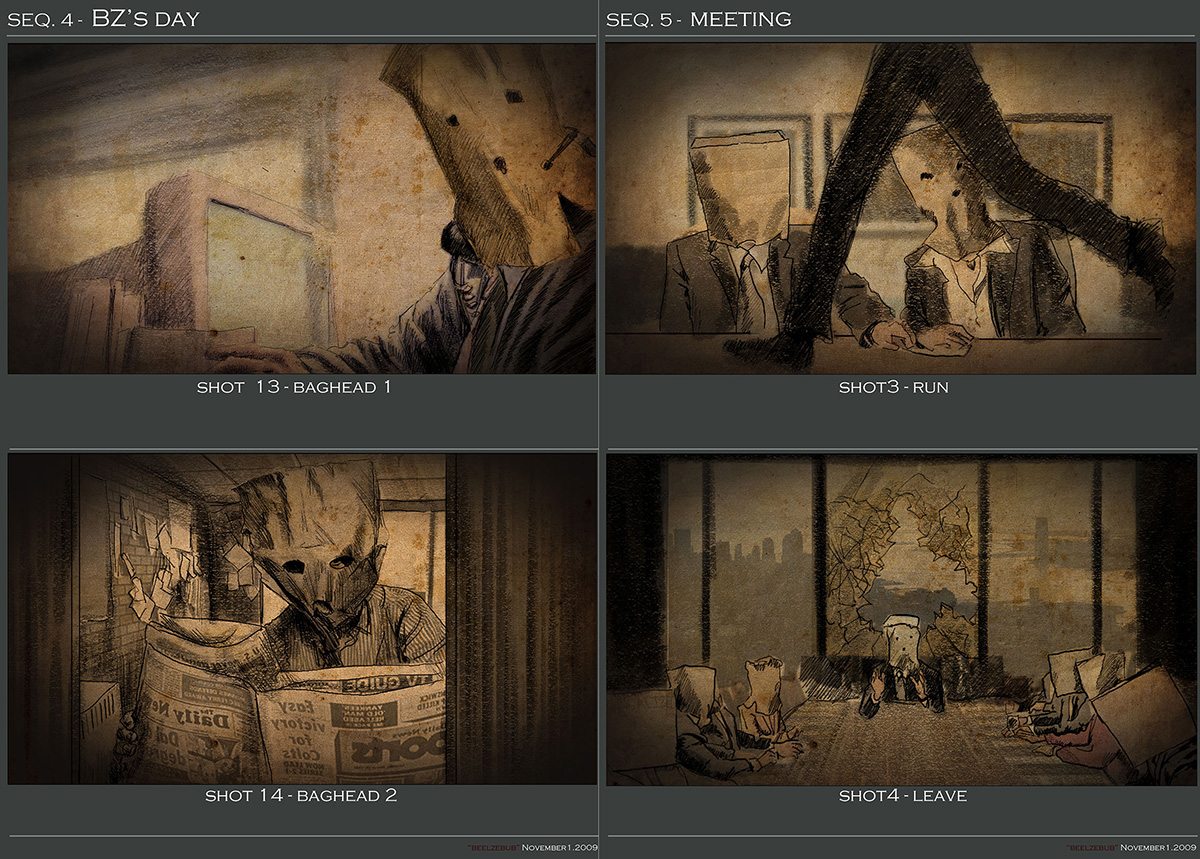
Even though it’s cg animated, the film still seems to have a very realistic feel from the final look and the floating camera, for example, and the style of animation is naturalistic. Can you talk about these aspects?
Ishan Shukla: Well it was animated in 3D, but I purposely didn’t want to include any reflections, say. That’s a dead giveaway for a 3D film, with reflections and specular hits. The film is also very dark by the end, so I wanted to maintain a certain mood for the film the whole way through. Also, I thought of it as a feature film so I tried to be as cinematic as I could with the camera movement. It’s only my first film and I’m not sure yet what my style is.
How did you create the imagery?
Ishan Shukla: What I did was I just rendered everything in 3D and I took the outlines only from the characters. Then I superimposed them over the backgrounds. That created a very unique look and then I could play a lot with the colors. So the red light district in the film, it’s only just red and blue. Every scene in the film also has heavy volumetrics to give it a hazy and foggy look, which I thought added to the dystopian feel.
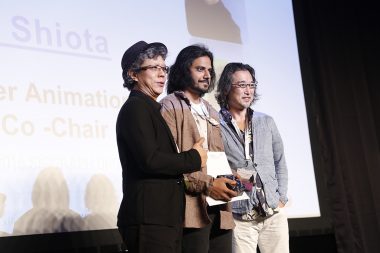
In terms of animation, it was mostly motion capture for the people. I used the online service called Mixamo which provides you with animation. Most of the secondary characters are motion captured. All the key characters were customized or my video references – videos that I shot of myself acting in front of the camera. Even female characters. Then there were a couple of animators, other artists, and voice actors, and a musician also helping me with the film.
I was using Maya for the animation and doing post-production in After Effects and Photoshop. For rendering, a beta of Redshift had just come out in 2013 and I tried that and it was fantastic. I could actually render full sequences in a few days’ time. So I took a leap of faith with it.
This was your first film, but what’s your own background in animation?
Ishan Shukla: I had previously trained at the 3dsense Media School in Singapore. Then I started working in Singapore at a broadcast company doing 2D commercials and documentary work. There my position was a cg generalist. Whenever I got a project there I had to do it from scratch – I had to do everything like storyboarding or animatics and the 2D animation.
Later I became an art director and then I thought it would be a good time to try and make my own films, so I took a two year sabbatical and came back to India. It was very risky but that’s when I started working on this film.
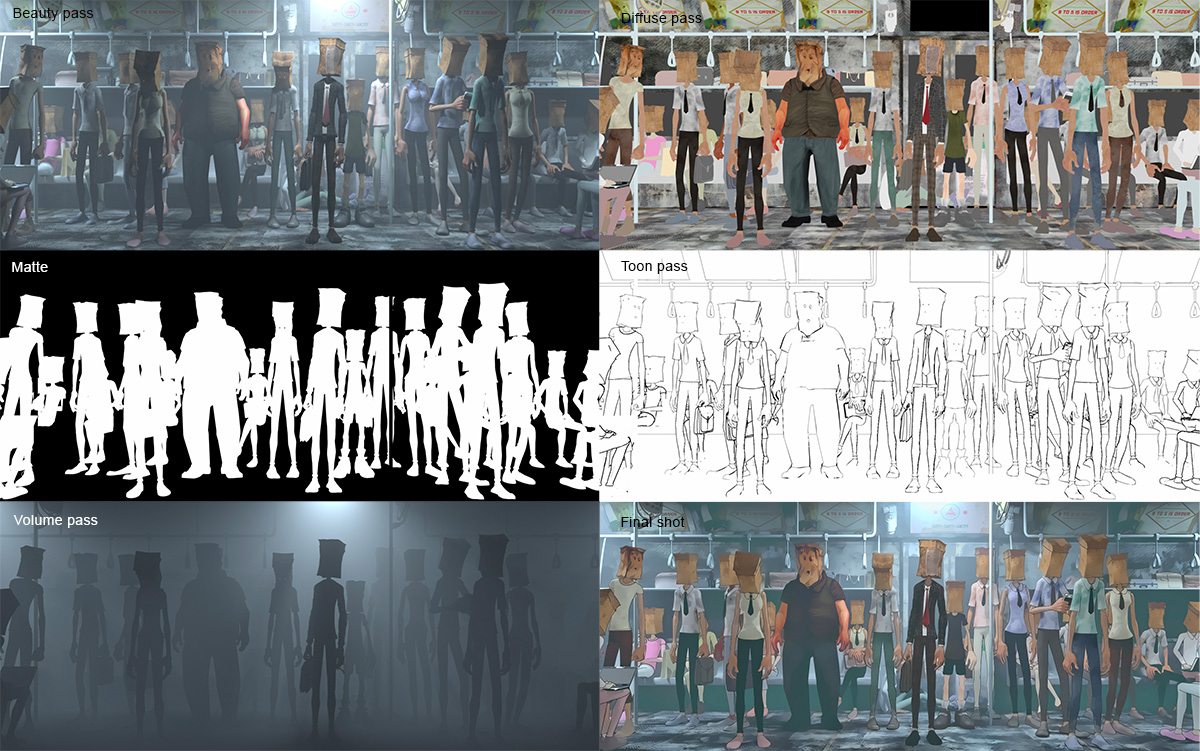
What would you say is the state of animation in India right now?
Ishan Shukla: It’s not very pretty right now. The big studios are mostly doing outsourcing work for other studios. As far as individual IP is concerned, there are only one or two IPs going on which are basically for preschool kids. I was really expecting it to grow when I was studying. I kept reading articles that the Indian animation industry was booming, but now that I’m there I don’t think it is. It’s really just that outsourcing work, some vfx, and then some work for Bollywood movies.
Did you receive any funding to make Schirkoa?
Ishan Shukla: I was trying to get some, but I really didn’t know where to look. I’m really very new to this! I didn’t know many people, so it was very hard to find any funding. I mostly worked from my savings and my wife was very supportive. There was no outside funding.
When did you start making the film, and when did you finish?
Ishan Shukla: I started working on the story in 2012. The actual production started in 2013 and I finished the film in July 2016. I have a day job, too, so I worked on it basically in the evenings and on weekends.
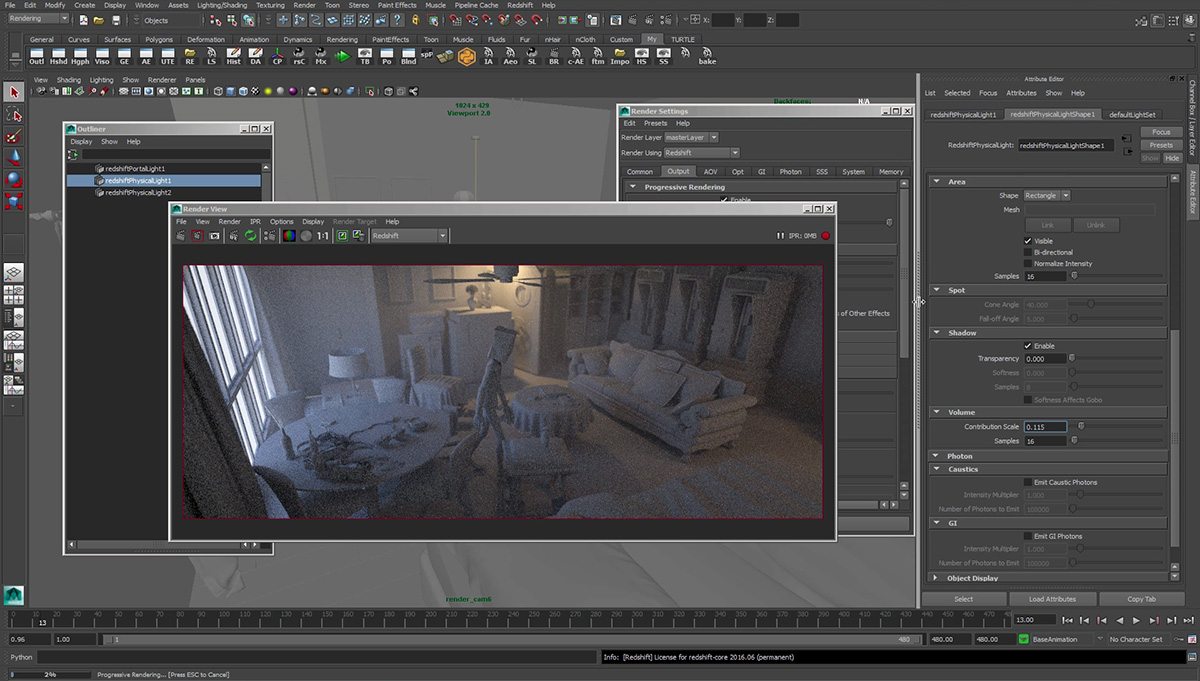
What has been the experience like submitting it to film festivals and then making the Oscar qualification?
Ishan Shukla: It’s been about four months since I started submitting it. It won at a few festivals and it was great to qualify for the [Academy’s] long list. It’s been making the rounds mostly in Europe. I’ve been getting a lot of emails with people interested in distributing the film. I’m still exploring that part.
What are your hopes for Indian animation, and your own work?
Ishan Shukla: I think there is a way there for me. There’s still really no industry in India, and I think I can do something about it. There are a lot of people from outside India asking me about my work, but if there’s a producer in India who has some interest I think it would be a great start. An original IP coming from here is a good thing. I have already have the treatment of my feature-length version of Schirkoa.
To find out more about the film and to see a full list of credits, head to Schirkoa’s website.
